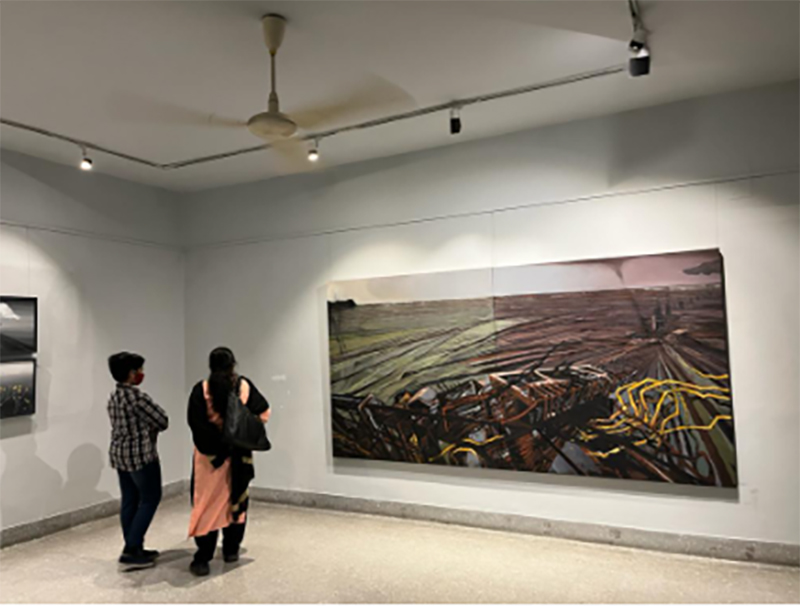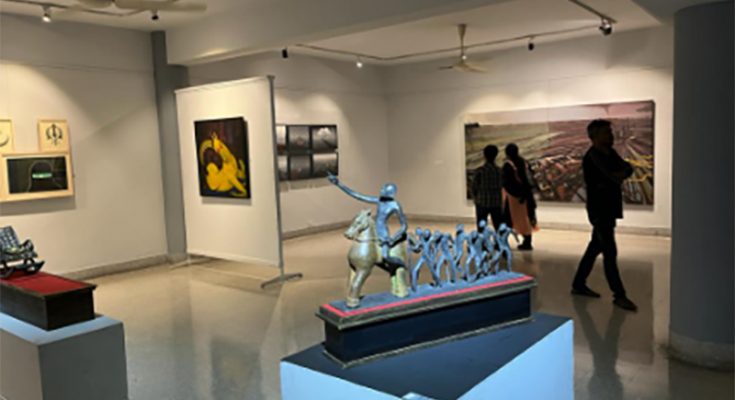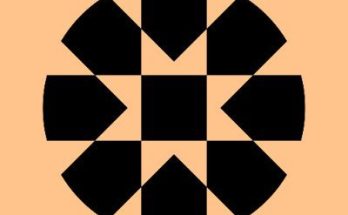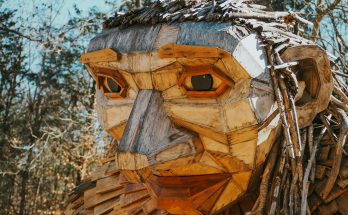Kolkata/IBNS: Kolkata’s Birla Academy of Art and Culture recently showcases the works of …. artists under the aegis of Reflection of Another Day, popularly known as RAD, an art collective that primarily draws inspiration from the non-sentient, static world.
Founded by Partha Pratim Roy, RAD began its journey in 1992. This year RAD completed three decades of its existence and among the artists who showcased their works were several internationally known names.

The show was held from March 2 to 7. Biswa Basu, an artist participating in the show, said: “This was our annual show of 2022 and we had four internationally acclaimed artists among us. They were Chandrada Bhattacharya. Sudhangshu Bandyopadhyay, Sanatan Dinda and Rathin Kanji.”
As one walks through the show, several works draw attention. One among those were the works of Prabal C Baral whose mixed media on print is inspired by the illustrations of Thakumar Jhuli, a collection of Bengali folk and fairy tales by Dakshinaranjan Mitra Majumder which were published in 1907.

While many Bengalis grew up on the fairy tales of witches and princes, Baral recreated the accompanying illustrations in his works. “I have a strong belief that these illustrations were not by the writer Dakshinaranjan Mitra Majumdar but by some accomplished unknown artist of that time,” he said.

RAD Journey
Artist Chandra Bhattacharjee said RAD began its journey as an art collective based on an inclusive, idealistic, manifesto that ‘humans are not the only truth in this world.’
“The idea was to delve into the static world of the apparently inanimate and stretch the scope of artistry beyond ‘living’ creatures like human beings, who have the luxury of motion, and the power to both create and destroy. As our planet visibly heaves under the poundings of this, at times, thoughtless power, RAD’s founding vision seems particularly germane to our contemporary times.”
“RAD does not just hold on to its mindful optimism, it consciously regenerates it with lively initiatives. We greet our guests with seeds and plants, never cut flowers. Instead of lighting a lamp, our patrons inaugurate RAD’s programs by watering a sapling,” he said.

According to Bhattacharjee, during the initial years, “Members decided to shun ‘apparently’ sentient beings like humans, animals, birds, insects and so on, instead of engaging with plant life, the elements, naturally occurring substances, man-made creations like dwellings and other objects, to offer a different viewpoint to our audience, provoke a new dialogue.”
Over the years, instead of rigidly adhering to the formula, some of the artists have felt the need to expand the vocabulary to the ‘living’ world “to better articulate our complex ecosystem,” said Bhattacharjee.

But some members remain strictly faithful to the initial concept.
RAD is not only a free platform (there is no monetary subscription involved) for artists to share their ideas but also offers a springboard to promising artists who may not have had a lucky break.
The collective is largely steered by artists Partha Pratim Roy, Rathin Kanji, Sanatan Dinda, Sudhangshu Bandopadhyay, and Chandra Bhattcharjee.





